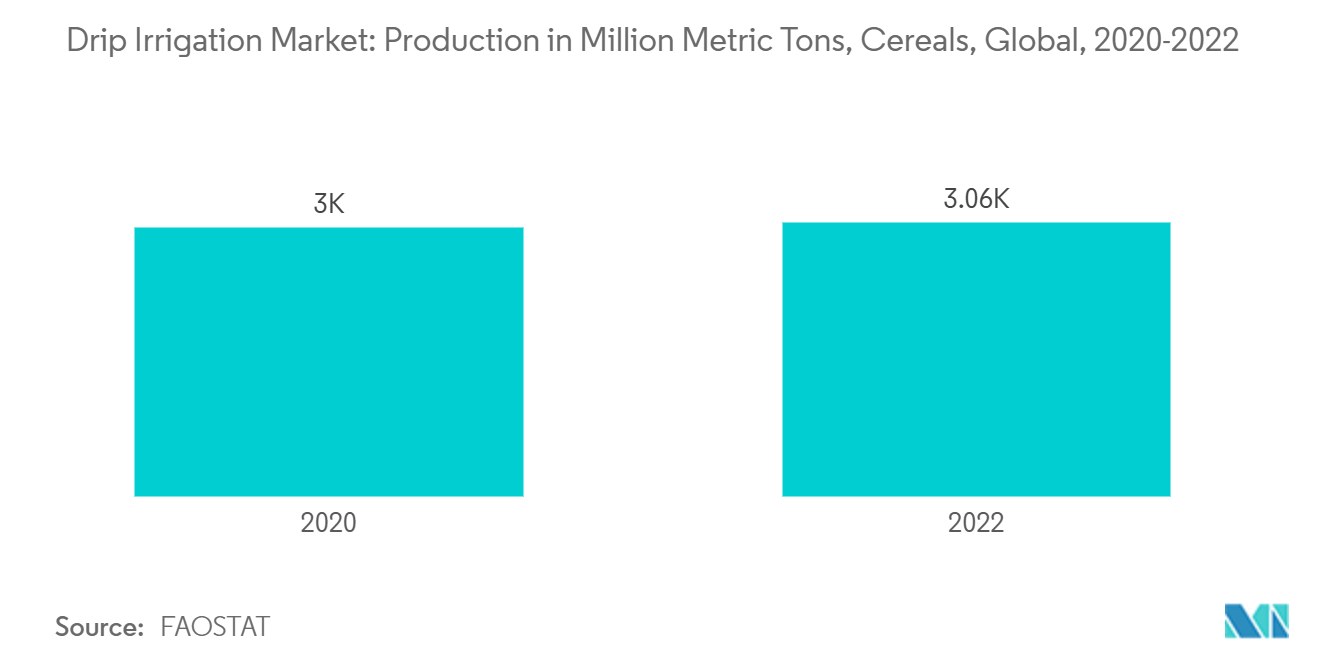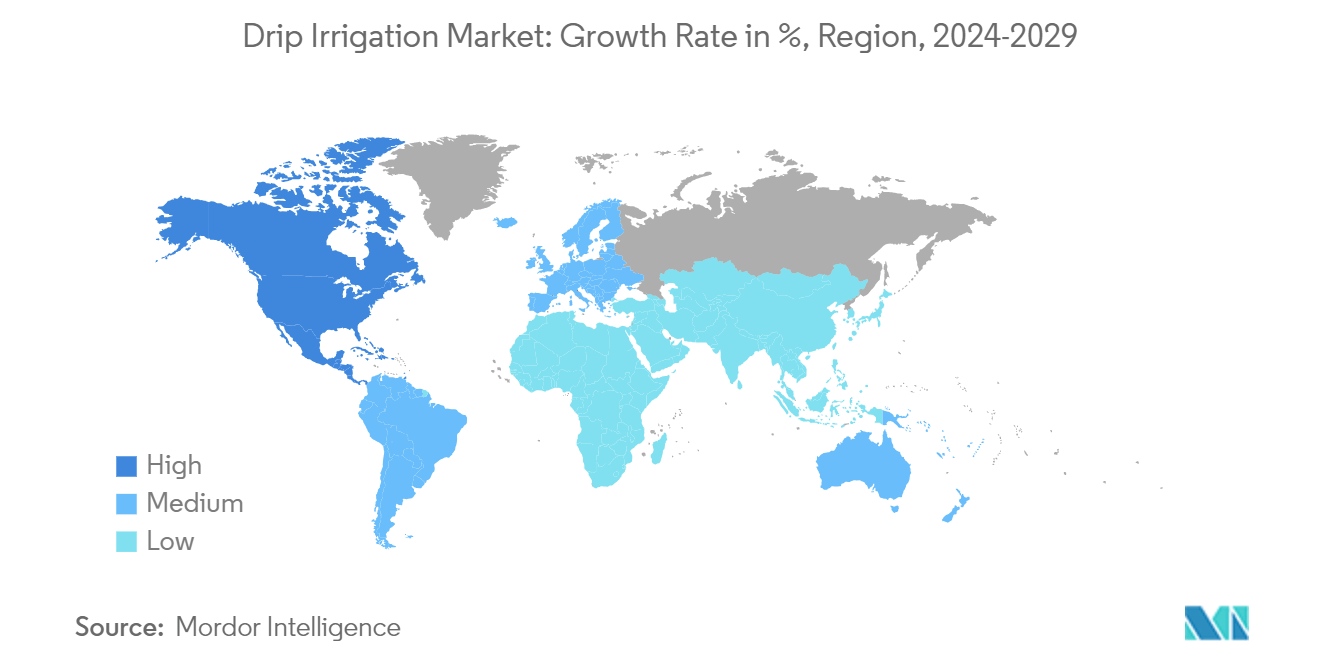Market Trends of Drip Irrigation Industry
Field Crops is the Significant Segment by Crop Type
According to the FAO, about 70% of the cultivated land was used to grow cereals, as most cereals, such as rice and maize, are water-intensive crops. The increasing global population is pressuring farmers to enhance cereal production worldwide, thus leading to the increased use of precision irrigation in this segment. As per the FAO report, world cereal production in 2022 reached a record high of 3,059.6 million metric tons from 3,003.6 million metric tons in 2020.
Rice, wheat, and maize account for the prominent cereal crops cultivated around the globe. Though these crops were grown as rainfed traditionally, results of various field trials and studies conducted to evaluate the positive impacts of irrigating these crops have strengthened the demand for irrigation systems. For instance, in a study conducted in Poland in 2023, the average yield of maize was increased by 25% compared to traditional irrigation methods. In the same experiment, fertigation through drip was also practiced, increasing the average yield by 2.35 metric tons per hectare, concluding the significance of this method’s efficiency.
Advances in science and technology led to the application of IoTs and automation in drip systems at the field level. These moments attract farmers, creating a scope for drip irrigation suppliers and companies where the point of attraction is easier irrigation with no labor and time boundness. Governments are also taking initiatives for sustainable growth practices by conserving water. Recently, in India, Pradhan Mantri Krishi Sinchayi Yojana (PMKSY) is a special scheme that promotes precision irrigation practices by subsidizing and improving farmers' awareness of water use efficiency. Besides, in 2022, Netafim started an introductory rice cultivation project in dry fields in Japan using drip irrigation. The system reduces water and fertilizer waste and encourages a shift to sustainable production that reduces methane gas emissions.

Asia-Pacific Dominates the Market
The drip irrigation usage in the Asia Pacific agriculture sector witnessed significant growth during recent years, which is majorly due to the growing area under irrigation due to the expansion of micro-irrigation projects, which can reduce water consumption. In 2022-2023, the area under irrigation was expected to reach 73 million hectares, accounting for 52% of the total agricultural land, which is 41% higher than in 2016, according to the Niti Aayog. Likewise, according to the National Bureau of Statistics of China, the irrigated area in China accounted for 69.61 million hectares in 2021 and had risen by 70.36 million hectares in 2022, thereby delivering high demand for drip irrigation in the market.
Besides, the area under drip irrigation was higher in Andra Pradesh, followed by Maharashtra, Gujarat, and Punjab. To encourage a conductive farming environment and implement the successful drip irrigation model across these states, Netafim is providing drip irrigation systems. In 2023, under the initiative, Netafim provided drip irrigation systems for tomato growers through four Better Life Farming (BLF) Centers present in the Khajuri, Kolaras, and Pohari regions of the Shivpuri district in Madhya Pradesh. This initiative increased the tomato crop yield by 40%, resulting in higher adoption of drip irrigation systems in Maharashtra.
China is one of the world's largest markets and consumers of drip irrigation equipment. This is mainly attributed to the government’s aim to equip farms with highly efficient water-saving irrigation technology and systems as part of its five-year plans to equip at least 75% of the total irrigated area with micro-irrigation systems by 2030. Further, The government often works with drip irrigation companies to increase the availability of water-saving equipment to farmers. For instance, in November 2022, the Local Government of Yuanmou in Yunnan Province partnered with Dayu Irrigation Group Co. Ltd, which will work together in a PPP (Public-Private Partnership) Project mode for the distribution of drip irrigation pipes of over 3.33 million meters and 1.2 million drippers till 2038.


